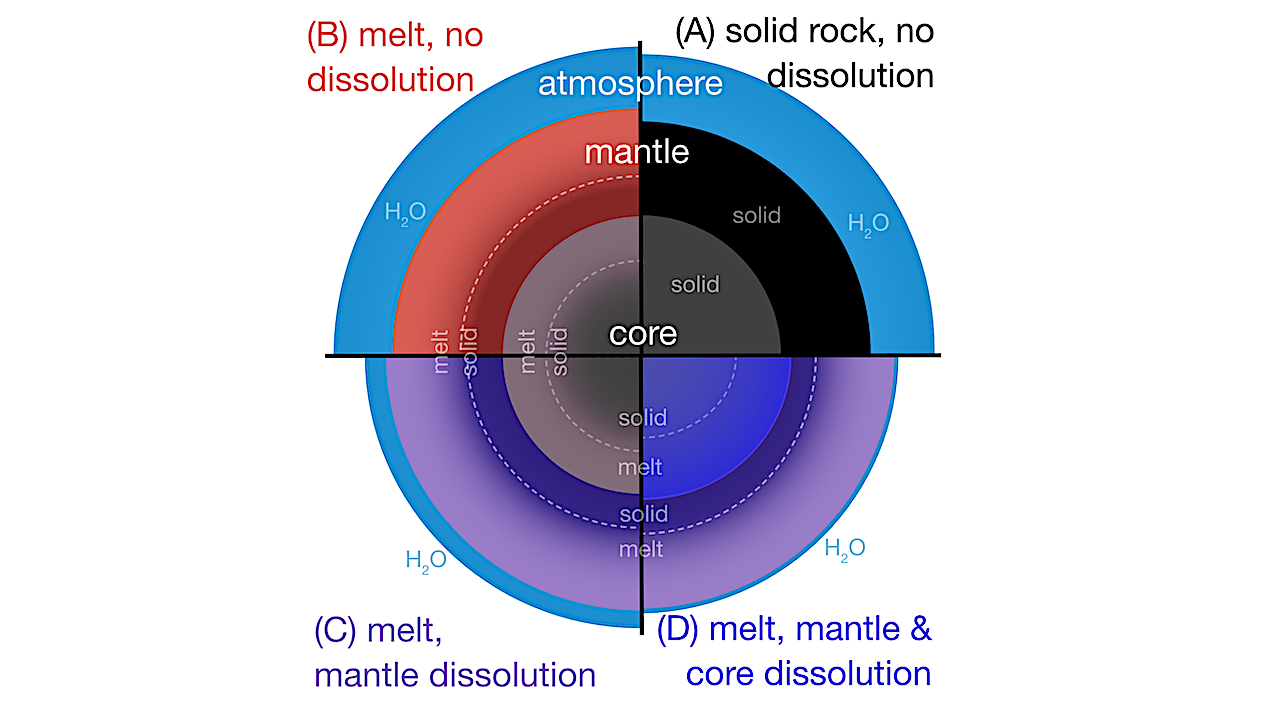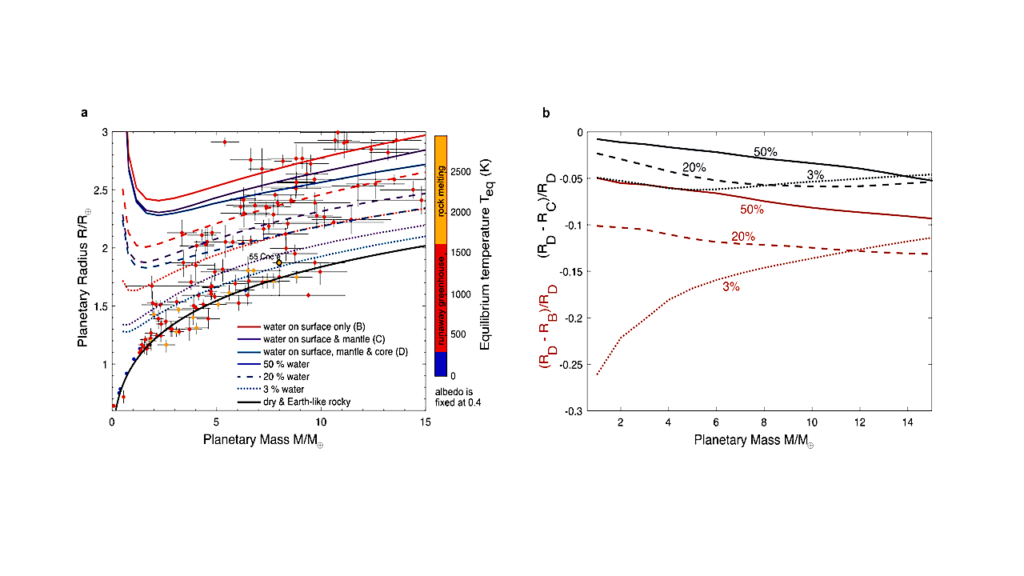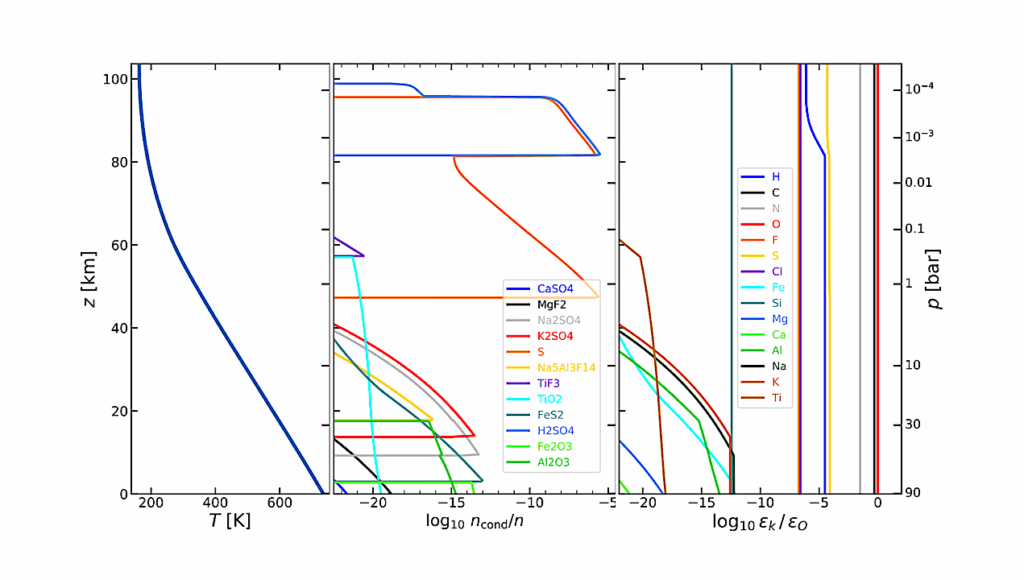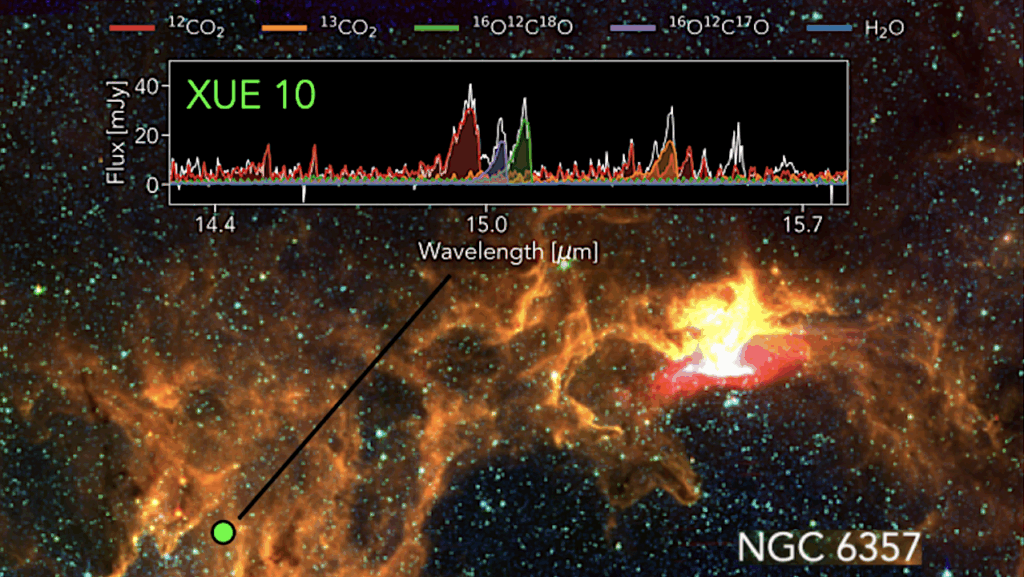Majority Of Water Hides Deep In The Interiors Of Exoplanets

Water is an important component of exoplanets, with its distribution, i.e., whether at the surface or deep inside, fundamentally influencing the planetary properties.
The distribution of water in most exoplanets is determined by yet-unknown partitioning coefficients at extreme conditions. Our new first-principles molecular dynamics simulations reveal that water strongly partitions into iron over silicate at high pressures and thus would preferentially stay in a planet’s core. Furthermore, we model planet interiors by considering the effect of water on density, melting temperature, and water partitioning.
The results shatter the notion of water worlds as imagined before: the majority of the bulk water budget (even more than 95%) can be stored deep within the core and the mantle, and not at the surface.
For planets more massive than ~6 Earth’s mass and Earth-size planets (of lower mass and small water budgets), the majority of water resides deep in the cores of planets, Whether water is assumed to be at the surface or at depth can affect the radius by up to 25% for a given mass. This has drastic consequences for the inferred water distribution in exoplanets from mass-radius data.

Effect of water partitioning into the core and mantle on mass-radius relationships: (a) Massradius relation of exoplanets under various bulk water content and interior models (black: D versus C; red: D versus B following Fig. 2). Data for well-characterized exoplanets are shown for comparison. (b) Differences in calculated planet radii as a function of bulk water content, interior model, and planetary mass. Results are shown relative to the scenario D, the most self-consistent interior model. The rocky interior is composed of Mg-Si oxides and silicates (66 wt%) and an iron core of 33 wt% (see black line for a dry interior). We add different amounts of water (3%, 20%, and 50% of the total mass fraction). All curves are shown for an equilibrium temperature of 1000 K. The planet sample comes from the PlanetS database20 (as of June 2023) to which we have added TOI-561 b, c, d21 and the new estimates for Kepler-138 d, c, e22. We show planets with mass uncertainties better than 35% and radius uncertainties better than 30%. Differences between the modelscenariosrange from 3% to 25%. When neglecting water dissolution in the mantle and core, the errors are the largest. The largest errors are identified forsmall planet masses and lower water mass fractions, similar to what has been shown for the water dissolution in the mantle. — astro-ph.EP
Haiyang Luo, Caroline Dorn, Jie Deng
Comments: Submitted to Nature Astronomy-after 1st review
Subjects: Earth and Planetary Astrophysics (astro-ph.EP)
Cite as: arXiv:2401.16394 [astro-ph.EP] (or arXiv:2401.16394v1 [astro-ph.EP] for this version)
Submission history
From: Haiyang Luo
[v1] Mon, 29 Jan 2024 18:35:54 UTC (7,737 KB)
https://arxiv.org/abs/2401.16394
Astrobiology, Astrochemistry, Astrogeology,








